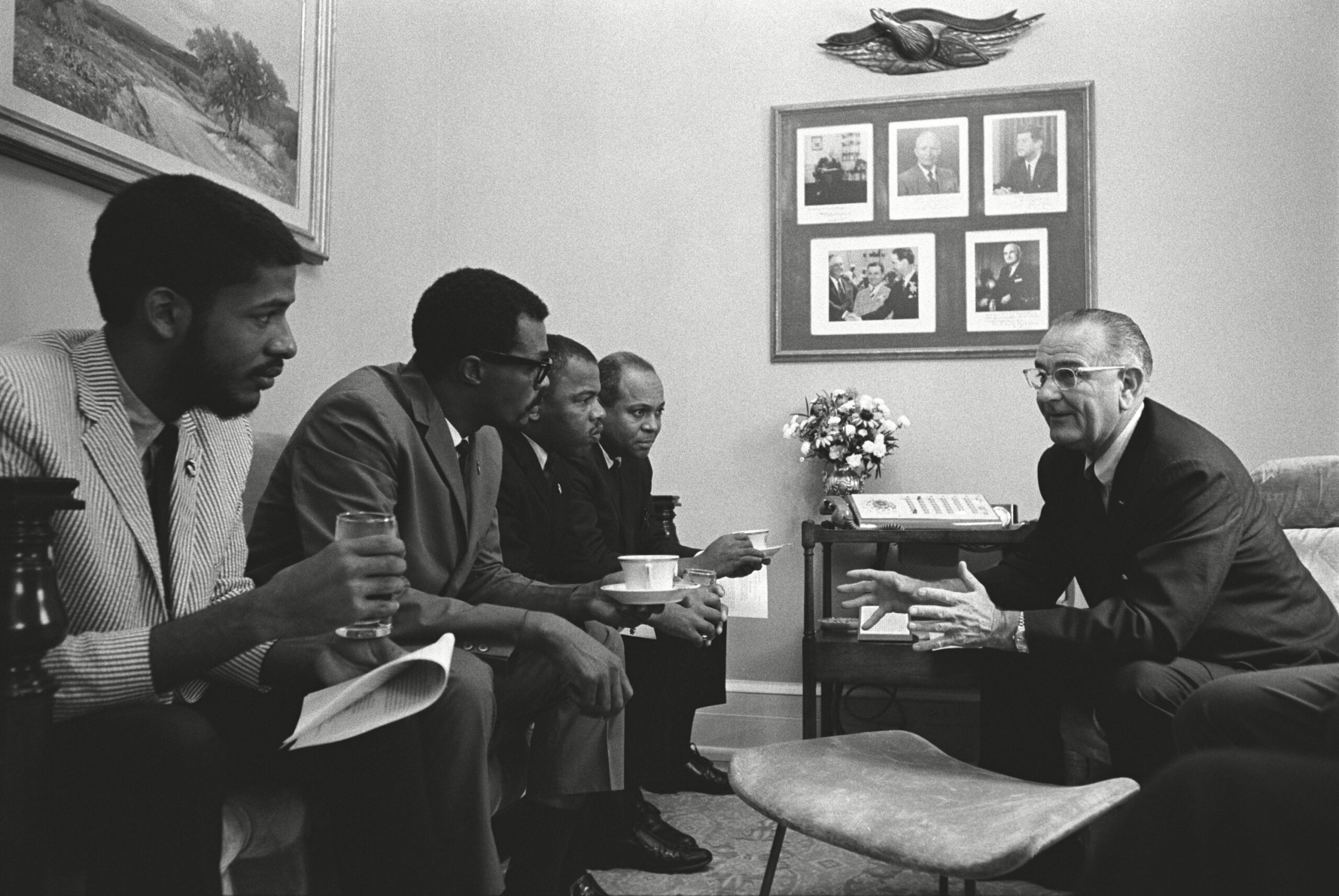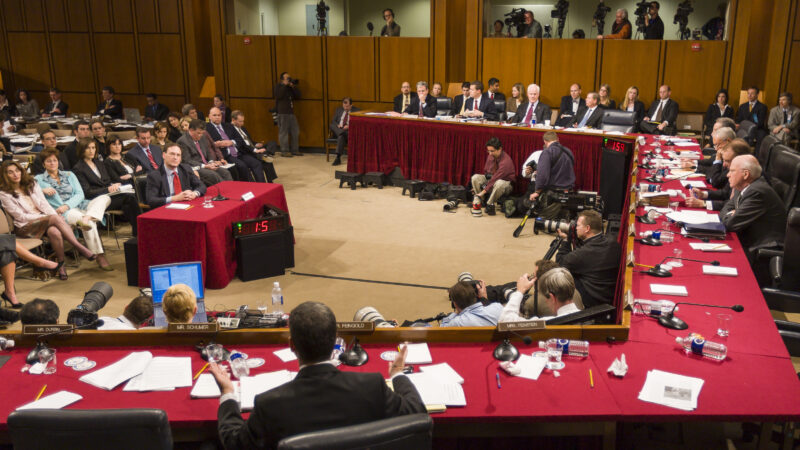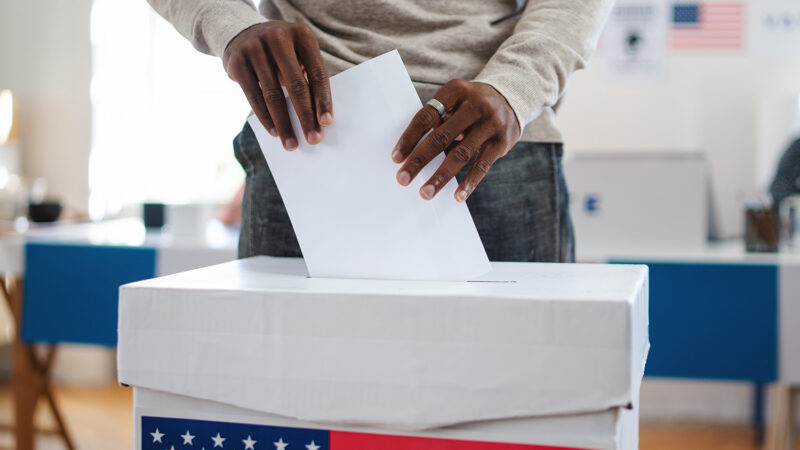Proportional representation and the future of the Voting Rights Act
- September 12, 2023

One of the most pressing challenges of American democracy, if not the most pressing challenge, is finding an appropriate method of allocating political power among an increasingly diverse — in terms of race, ethnicity, religion, national origin, class, and ideology — and polarized people. For many decades, of course, this was not a challenge in most of the country, as white politicians saw to it that Black voters and others were denied representation. One method of doing so was the use of at-large, multimember districts. These districts diluted Black voting strength by submerging Black populations within larger districts with white populations in which voting was racially polarized, which made it virtually impossible for candidates supported by the Black community to win.
The 1965 Voting Rights Act (VRA) began to change this, but it wasn’t until 1982, when Congress amended Section 2 of the VRA, that our country addressed this problem with vigor. Section 2 has been the key mechanism for effectuating representation for voters of color, particularly Black and Latino voters. In the 1980 case City of Mobile v. Bolden, the Supreme Court had limited Section 2 to voting practices and procedures that intentionally discriminated on the basis of race. Given the difficulty of proving intent, voting rights activists feared that such a requirement would make it almost impossible to stop states and local jurisdictions from using districts to dilute the voting power of Black and brown voters. But Congress revised Section 2 two years later to state that voting rights plaintiffs do not need to prove intent if they can show that the electoral practice or procedure at issue resulted in the “denial or abridgment…of the right to vote on account of race.” This test came to be known as the “effects” test.
Though Congress gave voting rights lawyers a critical lifeline in their fight against racial discrimination in voting, one cannot overstate the Supreme Court’s role in ensuring that Section 2 would become a potent weapon against racial vote dilution. In the landmark opinion Thornburg v. Gingles, the Court in 1986 outlined three “necessary preconditions” for when voting districts impermissibly diluted voting power along racial lines. Plaintiffs must first show that they have the ability to elect a representative of their own by demonstrating that their group is sufficiently large and compact to fit in a single-member district. Second, they must show that they could in fact elect a representative of their choice because their group is “politically cohesive.” Third, they must show that their inability to elect their preferred candidate is because of race; that is, they must show “that the white majority votes sufficiently as a bloc to enable it…usually to defeat the minority’s preferred candidate.”
Under these standards, voting rights advocates successfully eliminated at-large, multimember districting schemes at the state and local level throughout the country. The traditional remedy was single-member districts, which ensured that minority voters would be able to select their representatives of choice in some districts. Because of Section 2’s pivotal role in providing representation for voters of color and a remedy for racial vote dilution, the voting rights community has been justifiably committed to the VRA, to Section 2, and to single-member districts as the solution. The community, and potentially voters of color more broadly, have developed a healthy distrust of multimember districts. Section 2 has changed the complexion of representative bodies and has successfully provided representation in local, state, and national legislatures for voters of color over approximately 40 years.
But times have changed. Notwithstanding its past effectiveness, its familiarity, and even its venerated status (legendary voting rights litigator Laughlin McDonald described Section 2 as “one of the most powerful weapons for protecting voting rights since it was amended in 1982”), Section 2 is operating on borrowed time. We focus here on two explanations, one rooted in policy grounds and the other in constitutional considerations.
Consider first the policy reasons. Section 2’s preferred mechanism for remedying discriminatory representation — single-member districts — necessarily compels the government to decide which ethnic or racial groups get to have their own districts. Trade-offs in electoral systems are inevitable. Not everyone can win all the time. But our winner-take-all electoral system seems to exaggerate the costs. If you don’t win a plurality in your district, you don’t get any representation whatsoever.
Both as a general matter and from the perspective of fair representation, this is a very crude way of distributing power. But it becomes even more problematic when political power is being apportioned along racial lines. Section 2’s approach has long been justified — and is justifiable — as a remedy for historic and contemporary discrimination in representation by white political elites and voters against voters of color. However, in a country that is becoming ever more multiracial and multicultural, the claims for political power will increasingly be made between and among racial minority groups (which, it’s worth bearing in mind, will one day include white people). Our current winner-take-all, first-past-the post, single-member voting districts, in which self-benefiting government actors get to not just pick political winners and losers, but pick them along racial lines, will simply serve to maximize racial conflict, particularly among racial minority groups. Prominent racial and political groups will, understandably, demand proportional political power. We are seeing examples of this dynamic today. Consequently, the current approach is under severe stress and demands attention.
As the American electorate has become more diverse along multiple dimensions, and as Americans have become more dissatisfied with their democracy, the calls for reform grow louder and become more difficult to ignore. A quest that had long seemed quixotic, the move from a plurality system to a proportional one, no longer seems unfathomable. Proportional electoral systems present viable options for sustaining and building upon the gains in political representation that voters of color have achieved thanks to Section 2, without pitting different racial and ethnic communities against one another. Importantly, Section 2 does not constrain reformers from moving away from single-member districts. To be sure, the Uniform Congressional District Act, which mandated single-member districts for the House of Representatives when it was passed in 1967, poses a barrier at the federal level and would have to be amended. But reformers are not so restricted at the state and local level, where they can explore proportional systems within the bounds of state law.
How could a proportional system work in today’s America to protect and even perhaps strengthen minority representation? A proportional system would ensure that voters of color gain seats in proportion to their electoral strength. For example, in a proportional system, if Black voters constitute 40 percent of the electorate and they vote cohesively, the Black community is likely to receive 40 percent of seats. At the very least, a proportional system will be able to deal with the problem of racial gerrymandering and the dilution of Black voting power.
Whether or not voting rights activists are convinced that a new direction is necessary, the Supreme Court likely will soon compel them to change course anyway. Many expected the Court to weaken Section 2 last term in Allen v. Milligan. Surprisingly, Chief Justice John Roberts authored an opinion on behalf of Justice Brett Kavanaugh and the three liberals reaffirming the status quo. But it would be imprudent to read Milligan as providing more than a temporary reprieve for Section 2. Sooner or later, the Section 2 regime as we know it will be no more.
Allen v. Milligan arose from lawsuits challenging Alabama’s congressional districting plan (known as HB1). Relying on the Fourteenth Amendment and Section 2 of the VRA, the plaintiffs argued that HB1 diluted the voting power of Black citizens by grouping Black voters in one district in which they constituted a majority of the population and submerging the rest in three districts in which they had no chance of electing a representative of their choice. The district court granted a preliminary injunction precluding Alabama from conducting elections using that map; controversially, the Supreme Court stayed this order, permitted Alabama to use the contested map for the 2022 midterm elections, and docketed the case for oral argument in the fall of 2022.
On its face, the Roberts opinion in Milligan is a strong defense of the status quo. Roberts reaffirmed the Court’s prior precedents and rejected all of Alabama’s arguments that either the statute or the Constitution requires colorblindness in identifying the harm of vote dilution or crafting a remedy. In particular, Roberts argued that one of the strengths of Section 2, and a basis for its constitutionality, is that it does not require proportional representation. In this context, calls for proportional representation are interpreted as mandates for proportional outcomes according to race. Roberts explicitly rejected this argument. “Forcing proportional representation,” he wrote, “is unlawful and inconsistent with this Court’s approach to implementing [Section] 2.”
The opinion also reaffirms the viability of race-conscious majority-minority districts. So long as race does not predominate — as long as race is one among other traditional redistricting considerations, such as compactness, contiguity, and keeping communities of interest together — the state can be race-conscious in drawing the lines. Taking race into account in drawing district lines is not, by itself, to classify voters on the basis of race; a racial classification exists only when race predominates in the line-drawing process. This distinction between race consciousness and racial predominance provides a way of reconciling Milligan with another blockbuster case from this past term, the Court’s affirmative action opinion in SFFA v. Harvard, which concluded that racial classifications in college admissions are presumptively unconstitutional.
In light of all of this, one might be tempted to conclude that Section 2 is on sound constitutional footing. That conclusion would be unwise. Rather, Milligan reflects the fact that neither Roberts nor Kavanaugh are ready to unsettle the current doctrinal approach. Yet.
One can speculate as to Roberts’s motives, but it is clear that he, the author of Shelby County v. Holder — the 2013 decision that significantly weakened the VRA — is not a voting rights activist. In fact, as a 26-year-old lawyer coming off a clerkship with Justice William Rehnquist, Roberts played a central role as a special assistant to the attorney general in framing the Reagan Administration’s position against amending Section 2 during the 1981-82 debates, including drafting more than 25 memos opposing the effects test.
In his dissent from the Court’s decision to grant the earlier stay in Milligan, Roberts seemed to set the stage for a future attack on the constitutionality of Section 2. “But while the District Court cannot be faulted for its application of Gingles,” he wrote, “it is fair to say that Gingles and its progeny have engendered considerable disagreement and uncertainty regarding the nature and contours of a vote dilution claim.” Though he would not agree with granting the stay, he would set the case for oral argument for the following term “[i]n order to resolve the wide range of uncertainties arising under Gingles.”
As for Kavanaugh, one need not speculate; he authored a concurring opinion in Milligan in which he made clear that in his view the constitutionality of Section 2 is not settled. Relying on an argument from Justice Clarence Thomas’s dissent, Kavanaugh reasoned that “[E]ven if Congress in 1982 could constitutionally authorize race-based redistricting…for some period of time, the authority to conduct race-based redistricting cannot extend indefinitely into the future.” Kavanaugh did not expressly examine the temporal issue “at this time” because Alabama had failed to raise it. Between Kavanaugh and the four dissenting justices in Milligan, a majority of the Court has now signaled its assent to the notion that Section 2 has a constitutional expiration date. Given Roberts’s embrace of this same reasoning in the Harvard affirmative action case and his articulation of a strikingly similar rationale in Shelby County, there may be six votes for such an outcome. It has become clear that this is the front upon which the next battle for the constitutionality of Section 2 will be waged.
We will not have to wait long for the battle to commence. In response to the Court’s order in Milligan, the Alabama legislature approved a redistricting plan that did not offer a second majority-Black district as the plaintiffs requested. Instead, they offered one majority-Black district and a second district with a 40 percent Black voting-age population. Presumably, Alabama will now take up Kavanaugh’s implicit invitation and argue that Congress no longer has the power to authorize race-based districting. Alabama is testing our prediction about the future of Section 2 in real time. And if Alabama does so, it will not be alone. Louisiana has also argued that drawing majority-minority districts is a racial gerrymander in violation of the Constitution.
The bottom line is that we are a big country, the third largest in the world, with more than 330 million people and approximately 160 million registered voters. Compared to the world’s other mature democracies, we are among the most diverse. We are also attempting an unprecedented large-scale experiment in representative self-government. Facilitating self-government among a group of people with different and sometimes antagonistic histories — some of whom are descendants of enslaved people or of enslavers, some of whom were denied the privilege of American citizenship because of their race, ethnicity, or country of origin, some of whom arrived recently while others predated the founding — requires electoral structures that are suited to the task. Our current approach will increasingly pit communities of color against one another. This is neither desirable nor healthy.
By global standards, the American electoral system is anachronistic. Most advanced democracies use some version of a proportional electoral system. The constitutional uncertainty that surrounds Section 2 and the possibility of its eventual dissolution present an opportunity for voting rights activists to fundamentally rethink, and possibly reshape, American electoral structures of representation for a twenty-first century multiracial polity. Voting rights activists should not only be open to exploring the types of proportional electoral systems that could replace this version of Section 2, but they should also, rightly, take their place at the forefront of the reform movement.
This piece originally appeared in For A Better Democracy: Proportional Representation, a symposium published by Democracy Journal in partnership with Protect Democracy and with support from Democracy Fund.
Related Content
Join Us.
Building a stronger, more resilient democracy is possible, but we can’t do it alone. Become part of the fight today.
Donate
Sign Up for Updates Sign Up for Updates
Explore Careers Explore Careers
How to Protect Democracy How to Protect Democracy


